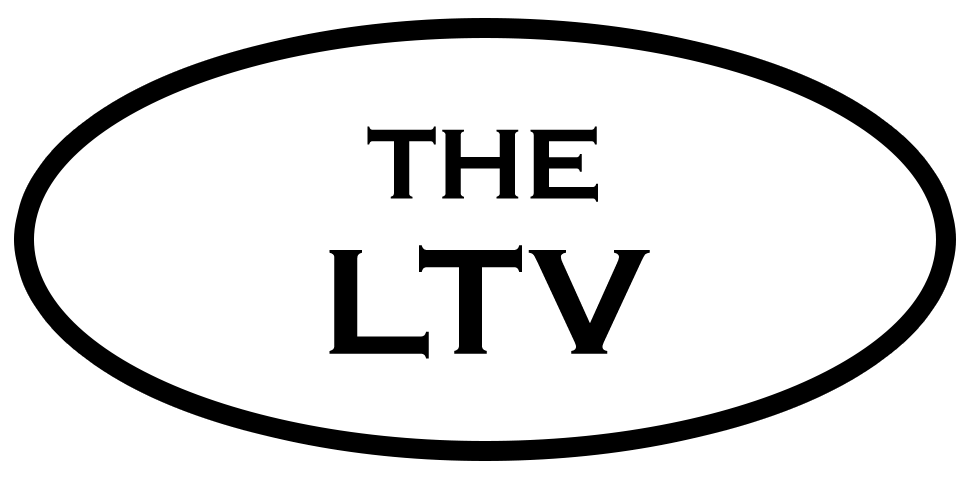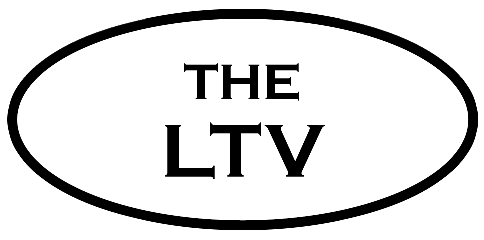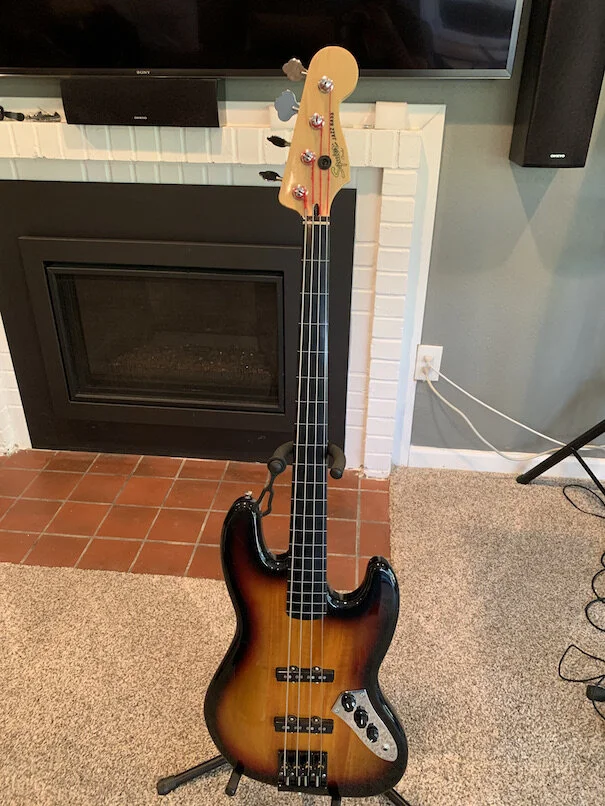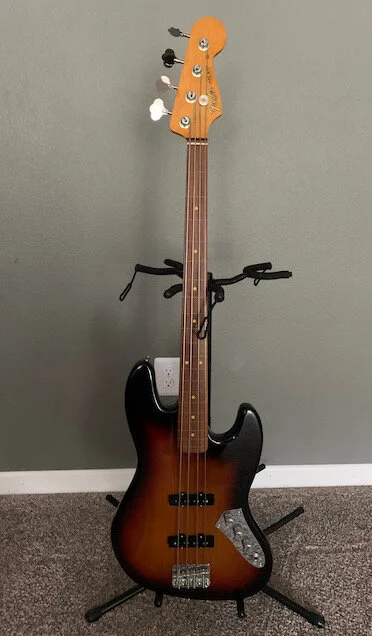Basstory 101
As I mentioned elsewhere, my journey on bass guitar started in 1980 when my junior high guitar teacher asked if I would like to play bass in the school jazz band. This presented me with two immediate problems. One, I did not know anything about “jazz”, and two, I did not own a bass guitar. My musical skills, particularly sight reading, were rudimentary at best, and I was being asked to join the premiere band at the school. My trepidation at joining was, to say the least, significant. However, this did give me a good excuse to ask for a new guitar and, with only four strings, how hard could it really be?
So, gathering up as much courage as my 14 year old self could (not much) I agreed, and I asked my parents if they could see fit to buy me a bass. I had visions of getting the same chocolate brown Ibanez that the current bassist was using, but alas, the price was too high. To be fair to my parents, they weren’t sure if this music hobby would even last, so I understand now their hesitancy at shelling out a bunch of money on a guitar, not knowing if I would even stick with it. They had already bought me a beginner’s acoustic guitar so another beginner’s model seemed appropriate. Time for a trip to the Sears catalog!
Bass Number One - $69 and no case
Sadly, I do not have any photographs of my first bass - this is the closest I could find online. I don’t remember mine having a black headstock, and I remember it being more purple/bluish in color, but it looked very much like this one. Interestingly enough, Kurt Cobain had this same model when he was around the same age. I also got a 5 watt solid state amplifier that barely put out enough sound to hear my “playing” but it did have a tone knob. The bass was heavy, difficult to play, did not stay in tune very well, but it was all mine.
I embarked on my bass career, playing with kids who had been in band classes and/or private instruction for years. I quickly realized I was far outside of my comfort zone, and I was terrified of the moments when the band teacher would ask for the rhythm section to play by themselves. I was plugged into a 100 watt Fender amp with plenty of power - no room to hide! The trumpet players would constantly be turning up the volume on the amp to exaggerate my failings as I stumbled along, playing next to two keyboardists who were phenomenal, kids that obviously had serious formal training. But, I did get to play concerts at various schools around town, and there were a few fun moments, mostly when I saw whole or half notes on the sheet music.
On the day our band picture was taken for the school yearbook, I was sick and thus was not in the picture. A very apropos summation of my jazz career.
A few years later, I got my first real guitar, my acoustic Ovation, and bass playing took a back seat. But as the 1980’s progressed and I got more into songwriting, I wanted to revisit the bass and get a better bass guitar. I became interested in multi-track recording and wanted… no, needed to get my ideas down on tape. By 1985 I had saved up enough money to purchase both an electric and a bass guitar, both Yamaha, both black, both $300. I thought having a matching set was… cool.
Ok, this is better. The BB300. I miss you.
This instrument was miles ahead of the Sears in terms of quality in that it would stay in tune (!), and it was much easier to play. I also bought a Yamaha bass amp that was much louder and had better EQ (where was all this money coming from???). This picture was taken in Kevin’s apartment, shortly after I met him. I used most of that camera roll taking pictures of HIM and his equipment, but I did have the foresight to snap one photograph of my bass.
I spent the next couple of years trying to learn how to play bass; however, instead of jumping in and learning the fundamentals of how to hold down a bottom end and lock in with a drummer (in part due to the fact that we had no drummer) I spent a lot of time trying to craft what I thought were “melodic” and “interesting” bass parts. This was mainly due to Kevin’s amazing virtuosity on guitar. By comparison, I felt like an absolute beginner… which I still essentially was. I continue to this day apologizing to Kevin for making him put up with my poor bass lines and even poorer drum machine programming during those years. But, we were learning how to write and craft songs and, if nothing else, I was learning what not to do on the bass.
In 1986 Kevin and I were still living in Roseburg, and he was working at one of the local music stores. I remember him coming to me one afternoon, very excited: a bass had fallen off the wall and had a chip in it. The store was selling it at half price! Even better, the new price was, wait for it… $300! It was a Westone Pantera, which I didn’t know anything about, but clearly a $600 bass was better than a $300 bass and if I traded in the Yamaha to save even more money, well…how could I not turn down this deal? I ran to the store, said goodbye to the Yamaha (I hardly knew ya) and took possession of what felt like the deal of the century.
My “white” period, circa 1991
This became my bass for the next… well, let’s say a long time. I loved the shape and the weight, and while I didn’t think it sounded any better than the Yamaha, it certainly looked a bit nicer. I actually even wrote some songs on this guitar, coming up with some arpeggios and chords while still trying to play “fast” like some of my newer heroes, Geddy Lee being among them.
I quickly learned, though, that I did not have the patience for practice, at least on my own. Learning scales and modes and trying to get faster would quickly bore me. I was much more interested in trying to write and arrange good songs and put down bass parts that at least propelled the song, instead of trying to be a soloist or a flashy player. But this guitar served me well as I joined Signal Corps and finally began working with a real drummer who could also play very well. Eagle eyed viewers will spot Daryl in the above pic, who definitely helped elevate my playing, my sense of time, and how to create a solid rhythm section. The bass is an interesting instrument - you get to drive the rhythm of the song, interacting heavily with the bass drum and the various rhythmic elements a drummer provides while also getting the opportunity to contribute to the melodic elements coming from guitars and keyboards. The best of all worlds!
By the mid-90’s music had taken a back seat to jobs and careers and family, and the Pantera along with my other guitars, went into the closet. I would dig it out occasionally but for the most part, it sat silent for a long time. But around 2015 I got the urge to play again (Getting Back into Music) and I thought it might be time to buy a better bass. Something iconic, something that I had actually heard, and heard of. Fortunately the quality of instruments at price points I could afford was far better than when I started out, and I was able to snag a good deal on a used Geddy Lee signature Jazz Bass.
Now we’re talking…
This instrument was an order of magnitude better than anything I had ever played before. Plugging it into my amp, I was amazed at how good it sounded - it was like a blanket had been taken off of the speaker. I had always played with fingers instead of a pick, which I felt kind of dulled the sound I got, but this guitar was bright and cut through quite clearly. I had read that was one of the signature traits of the Jazz, and why players in trios often used it; it could fill up the bottom end while also being well suited for melodic/busy bass lines. I can see, and hear, why. And if necessary, one can dial down the tone to approximate the smoother sound of a Precision bass. Very versatile.
A couple years later I had another deal fall into my lap (working at eBay, one tends to peruse listings quite a bit!) Another Fender Jazz, but this time a fretless model. And once again, right around that magic sweet spot of $300 that makes it hard to resist. This was a Squire model, which is Fender’s entry level line, but since I had never played a fretless before, it seemed like a good idea to try it out for not too much of an investment. I had been interested in exploring a fretless bass for a while, but I had always heard how much more difficult they were to play. Fortunately, this model has fret lines painted on, which makes the task a little easier.
Say hello to my little friend…
I discovered that, for this model at least, playing without frets wasn’t quite as difficult as I thought it would be. It’s definitely more challenging - unlike a traditional bass where a note is fingered right before the fret, on these you fret the note right on top of where the fret would be - not a lot of room for error! A lot of fretless models do not have any fret lines or even dots on the side of the fingerboard to guide the player - those models are typically used by players of a very high caliber. For the rest of us, fret lines are a decent compromise. And this model was similar in looks to Jaco Pastorius’ famous “Bass of Doom” which he made himself by removing the frets from a 1962 Jazz, filling them in with wood putty and then sanding and applying layers of boat epoxy to the fretboard. If lines were good enough for Jaco, they’re good enough for me!
I used this guitar on a number of the Loverture tracks, which gave them a different sound, and I starting feeling like the sound of a fretless would work on a lot of LTV material going forward. In essence, I was hoping to introduce something new, to help craft “our sound”, whatever that turned out to be. And while this bass did the job, the somewhat poor intonation and overall quality started to bug me. I upgraded the bridge, but that was only a temporary fix. I felt if I was going to continue down this path, I would need to invest in a higher quality instrument.
Musicians, and spouses of musicians, know where this is going next…
Grade A #1
After doing some research, I learned about the Big Brother to my Squire, the Jaco Pastorius signature Jazz Bass. Although it looks very similar to the Squire, the build quality is top shelf, with enhancements like chrome hardware, vintage single coil pickups, and a Pau Ferro fretboard, all of which are designed to give that “Jaco” sound. And it’s the first bass I own to be made in the USA. A friend at eBay had a USA made Jazz, and while I actually slightly preferred the sound of my Japanese made Geddy model, in my hands his bass just felt….better.
I have to be honest, I’m probably the only bass player on the planet not very familiar with Pastorius’ work, but I know what a good fretless in the hands of a good player can sound like, and after a crash course in some of his work, I was excited to give this model a try. And as I mentioned, some of our newer material would benefit tremendously from a fretless bass part. Do I think this will make me play and sound like Jaco? No, of course not, but I do hope it will be another texture that we can use.
So, after a year of saving and waiting (many Fender models have been out of stock for months due to Covid induced production delays) we have a new member of the bass family. I am excited to get to know this guitar and put it to good use and hopefully learn some new things in the process. As the saying goes, it’s a poor craftsman who blames his tools, but it’s also undeniable that quality tools make building things easier and more enjoyable. I look forward to hearing this one in action and some day be worthy of owning it.
Until next time…







